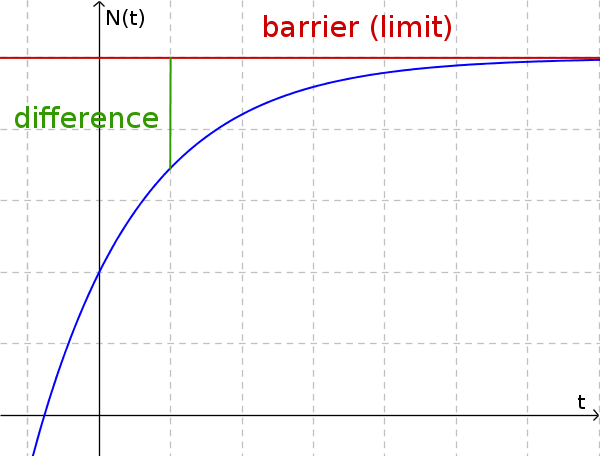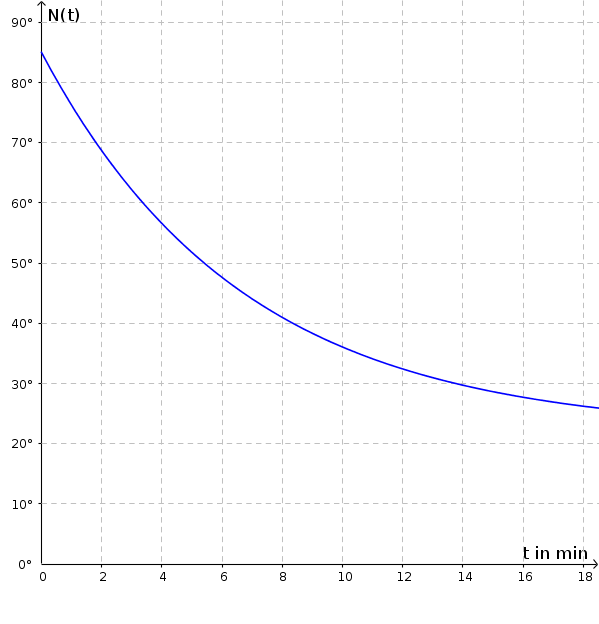Limited growth
Limited growth is limited by a natural barrier. That is, there is a limit (barrier) that limits growth up or down. The increment depends on the difference between the boundary $S$ and the current size. The larger the distance between the barrier and the size, the larger the growth factor.

The result is the following recursive formula:
$t...$ period of time
$k ...$ proportion of the difference
$S ...$ barrier
$N(t) ...$ current size
$N(t+1) ...$ subsequent size
Remember
Example
A cup of 85 ° C tea is served for cooling at a room temperature of 22 ° C. The tea cools by 15% of the difference per minute. How does the temperature behave in the next 15 minutes?
-
Insert barrier $S$ and proportion $k$
$S=22$
$k=15\%=0.15$
$N(t+1)=N(t)+0.15\cdot(22-N(t))$ -
Create a value table
$N(0)=85$
$N(1)=85+0.15\cdot(22-85)$ $=75.55$
$N(2)=75.55+0.15\cdot(22-75.55)$ $=67.52$
...
$N(15)=27.5$ -
Draw in the function

After 15 minutes, the tea has a temperature of about 27.5 ° C.
There is limited decrease. The tea gets closer and closer to the 22 ° C, but will never reach it. 22 ° C is the lower bound.
